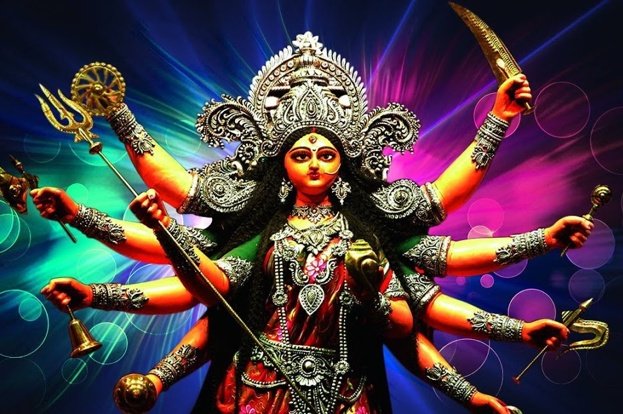9 Avatars of Goddess Durga- Navratri

During the nine days, all devotees solemnly fast and worship the nine forms or manifestations of Goddess Durga, also known as Shakti. Each day has a special significance, and one form of the Goddess is worshipped. Each day is also associated with one colour and one planetary body.
It’s the festive season, and people across India are all set to celebrate many important festivals in this month. Starting with Navratri, which is one of India’s biggest festival celebrated by the Hindus, is observed with devotion and great fanfare for nine nights and ten days. Though there are four seasonal Navratris which we celebrate, two of them are widely celebrated, one known as the Chaitra Navratri observed in the month of March/April, and another Navratri which is known as the Sharad Navratri is observed in the month of September/ October. This year the festival starts on September 29 and ends on October 7.
It is observed for various reasons and celebrated differently in various parts of India, and there are many parallel histories associated with it. But mostly, it is believed that during this time Goddess Durga defeated Mahishasur, the buffalo demon who signifies evil and ego. There is a history of Ramayana too associated with the festival as it was on the day of Dashami, the day after Navratri ends, Lord Ram killed Ravan.
During the nine days, devotees solemnly fast and worship the nine manifestations or forms of Goddess Durga, also known as Shakti. The Sharad Navratri or autumn Navratri is celebrated in the lunar month of Ashwin according to the Hindu calendar. Each day has a special significance, and one form of the Goddess is worshipped. Each day is also associated with one colour and one planetary body.
Here are the Navadurgas that are worshipped on Navratri.
Day 1
Goddess Shailputri. This incarnation of Goddess Durga is the incarnation of the collective power of Brahma, Vishnu and Maheshwara. The Goddess in this avatar is worshipped as the companion of Shiva.
Day 2
Goddess Brahmcharini. The second incarnation of Maa Durga. She is blissful and endows peace, prosperity, grace and happiness. Filled with bliss and happiness, she is the way to liberation or moksha.
Day 3
Goddess Chandraghanta. She represents beauty and grace and is worshipped on the third day for peace, tranquillity and prosperity in life. She is the symbol of bravery.
Day 4
Goddess Kushmunda. This incarnation of the Goddess is considered the creator of the universe. It is believed that she created this universe with her laughter.
Day 5
Goddess Skand Mata. She is the mother of Skanda, or Karthikeya, who was hand-picked by all the gods as their commander-in-chief in the war against demons. The Goddess represents the vulnerability of a mother who can fight to any extent against anyone when the need arises to protect her child.
Day 6
Goddess Katyayani. The Goddess was born to the great sage, Kata, as an incarnation of Durga. Dressed in orange, she exhibits immense courage.
Day 7
Goddess Kalratri. This incarnation of the Goddess has a dark complexion, dishevelled hair and a
fearless posture. She is the most fierce form of goddess Durga, and she is dressed in white, a colour
that represents peace and prayer.
Day 8
Goddess Maha Gauri. The eighth avatar of Maa Durga represents intelligence, peace,
prosperity and calm.
Day 9
Goddess Siddhidatri. The Goddess is known for having supernatural healing powers. The Goddess is represented as a blissful state of mind, just like the sky on a clear day.
We’ve created this content for informational purposes only, and it reflects the views of its respective authors/entities (freelancers/interns) and not those of Winspire Magazine. Winspire Magazine does not endorse or vouch for the accuracy of the information provided in this content. It is the reader’s responsibility to verify and ensure the information is correct and up-to-date. Winspire Magazine disclaims any liability or responsibility for any damages or losses from using this content. Therefore, readers should take all necessary steps to verify the accuracy and reliability of any information presented in this content.


